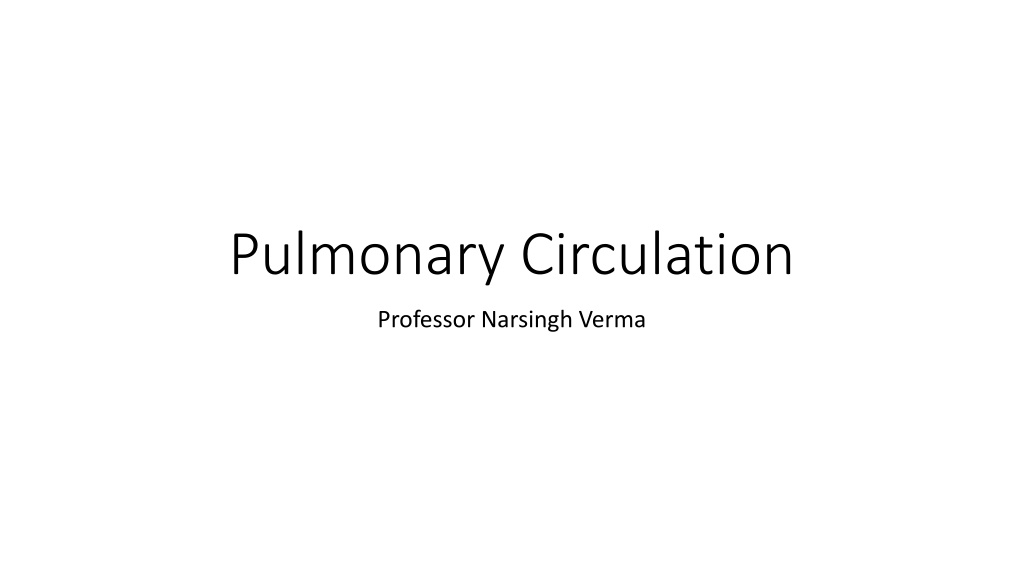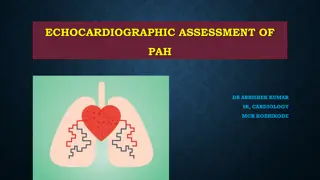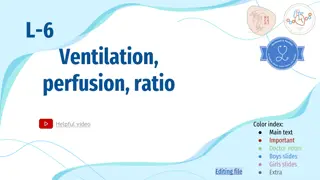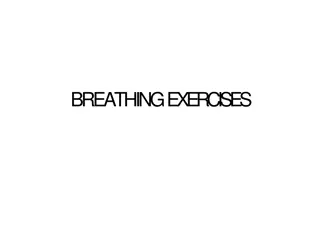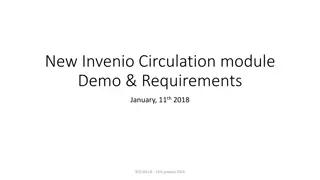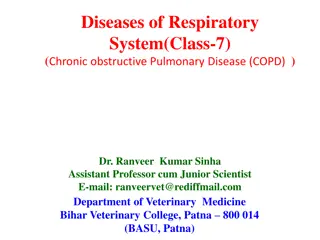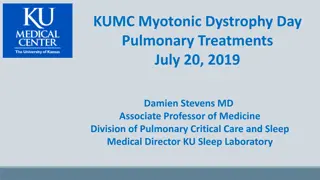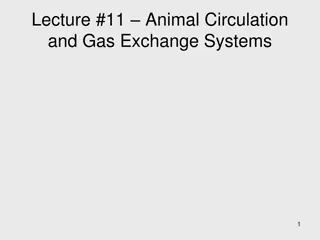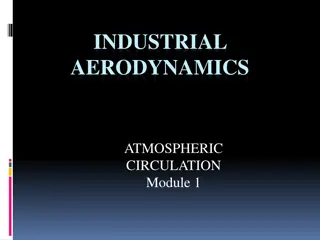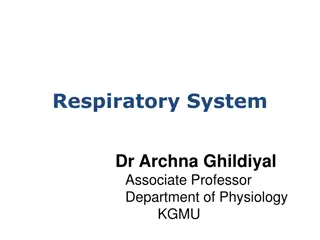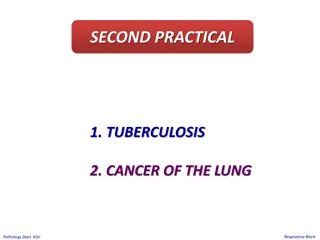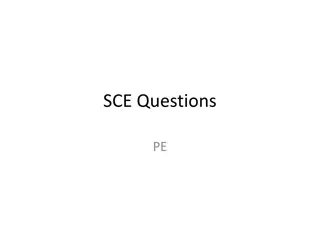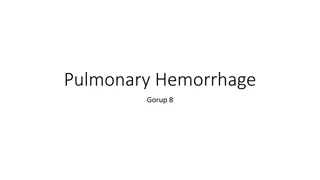Understanding Pulmonary Circulation and Its Importance in Respiratory Physiology
Pulmonary circulation, as explained by Professor Narsingh Verma, plays a crucial role in the respiratory system, showcasing distinct differences from systemic circulation. The low pressure and resistance in pulmonary circulation allow for optimal gas exchange at the alveolocapillary membrane. Various factors affect blood flow, such as hydrostatic pressure and osmotic pressure within the pulmonary capillaries. Overcoming supra-physiological states during high altitude or exercise reveals the intricate mechanisms that prevent pulmonary congestion. Additionally, heavy exercise induces significant changes in pulmonary blood flow and arterial pressure, facilitating efficient oxygen exchange in the lungs.
- Pulmonary Circulation
- Respiratory Physiology
- Gas Exchange
- Professor Narsingh Verma
- Pulmonary Blood Flow
Download Presentation

Please find below an Image/Link to download the presentation.
The content on the website is provided AS IS for your information and personal use only. It may not be sold, licensed, or shared on other websites without obtaining consent from the author. Download presentation by click this link. If you encounter any issues during the download, it is possible that the publisher has removed the file from their server.
E N D
Presentation Transcript
Pulmonary Circulation Professor Narsingh Verma
Differences from Systemic Circulation Low peripheral Resistance Low pressure Systolic20-25 mm Hg, Diastolic 6 -12 mm Hg & Mean 15mm Hg Pulmonary Arterioles Thin walled, large lumen Pulmonary Capillaries shorter and wider and blood flow is pulsatile Gas exchange is across Alveolocapillary membrane No interstitial tissue fluid Pressure in large pulmonary vein is about 8 mm Hg Abundant Lymphatics
Comparison of pressures in systemic and pulmonary circulations.
Different blood flow Blood flow to apex and base of Lungs are different lower at apical region and at base higher than middle segment of lung No interstitial fluid in lungs Alveoli remain dry to facilitate diffusion of Gases Pulmonary capillary hydrostatic pressure is 10 mmHg and Colloid osmotic pressure of 25 mmHg results in a net suction force of 15mmHg which tends to draw fluid from alveolar interstitial space in to capillaries
Supra physiological states If Pulmonary capillary Hydrostatic Pressure Rises above 25 mmHg Fluid can escape in to Interstitial space This can Happen during Exercise at High altitude Some fluid is trapped between collagen fibers delaying and preventing pulmonary edema J receptors are also stimulated leading to reflex tachypnea and reduction of skeletal muscle tone AS Piantal postulated that stimulation of J receptors induces Dyspnea which along with reduced muscle tone would discourage exercise preventing pulmonary congestion
Effect of Increased Cardiac Output on Pulmonary Blood Flow and Pulmonary Arterial Pressure During Heavy Exercise During heavy exercise, blood flow through the lungs increases fourfold to sevenfold. This extra flow is accommodated in the lungs in three ways: (1) by increasing the number of open capillaries, (2) by distending all the capillaries (3) by increasing the pulmonary arterial pressure.
Zones of Pulmonary Blood Flow Zone 1 blood flow No blood flow during all portions of the cardiac cycle Zone 1 Blood Flow Occurs Only Under Abnormal Conditions. occurs when either the pulmonary systolic arterial pressure is too low or the alveolar pressure is too high to allow flow 1. Too high alveolar pressure e.g. Breathing against a positive air pressure 2. After severe blood loss.
Zones of Pulmonary Blood Flow Zone 2 (intermittent fblood low) in the apices. In normal lungs, this zone is about 10 centimeters above the midlevel of the heart and extends from there to the top of the lungs Blood flows during systole but not during diastole. Zone 3 (continuous throughout the cardiac cycle) in all the lower areas. from about 10 centimeters above the level of the heart all the way to the bottom of the lungs, blood flow
Physiological Shunt = Bronchial Circulation Arterio-luminal veins and Thebesian veins Major function is respiratory gas exchange Removal of Emboli Presence of small emboli in pulmonary capillaries may excite J receptors --- -reflex increase in pulmonary arterial pressure ----Raised Pulmonary Capillary pressure ----Filtration of emboli out of the capillaries into lung parenchyma---cleared by macrophages Large embolus has blocked medium sized artery Bronchial artery circulation keeps nourishment ------Embolus may break into smaller fragments ---cleared
Immunological Functions well developed local immunological mechanisms involving vessels and lymphatics Reservoir Function holds about 18% of total blood Volume, about half of it can be released when required
Regulation of Pulmonary Circulation Blood vessels have rich innervation of Sympathetic vasoconstrictive nerves but no resting tone Take part in circulatory reflexes Most of the significant alteration in pulmonary blood flow occurs in response to local change in partial pressure of O2 Low PO2 produces vasoconstriction = opposite to systemic circulation Blood flow as per ventilation To distribute blood flow to most Oxygenated Alveoli
Why Tuberculosis is more common in apical regions of the lungs Poor blood flow in apical region Immune system gets weak Comparatively more oxygen is available
Pulmonary Edema CAUSES Left-sided heart failure mitral valve disease Damage to the pulmonary blood capillary membranes 1. Infections (pneumonia) 2. Breathing noxious substances such as chlorine gas or sulfur dioxide gas
Pulmonary Edema Safety Factor pulmonary capillary pressure must rise from the normal level of 7 mm Hg to more than 28 mm Hg Safety factor against pulmonary edema of 21 mm Hg.
Rapidity of Death in Acute Pulmonary Edema A medical emergency Cause: Acute left-sided heart failure Pulmonary capillary pressure may rise more than 50 mmHg Death frequently ensues in less than 30 minutes in severe cases
Cerebral Circulation Vital organ Normally utilizes only glucose as fuel Exclusively Aerobic Metabolism Fairly Constant does not participate in baro and chemo reflexes Autoregulated and very few controls Property of blood vessels High BP----stretching of cerebral arterial wall activates smooth muscle cells ----Vasoconstriction and CBF remains Normal similarly fall in BP------Vasodilation
Cerebral blood flow Region of brain performing task receives more blood supply Only a small part of brain remains active at atime CBF is about 770ml/mts 15% of cardiac output Grey matter is better supplied than white matter 2 internal carotid artery They give rise anterior and middle cerebral arteries 2 vertebral arteries they unite to farm basilar artery ----2 posterior cerebral artery connected to an anterior communicating and 2 posterior communicating artery
Cercle of Willis 3 pairs of cerebral artery and 3 communicating artery farm the circle of Willis at the base of the brain Venous drainage is partly in to large subdural sinuses and partly in to paravertebral veins and other cranial veins Cerebral blood vessels are supplied by sympathetic vasoconstrictor nerves from cervical ganglia They do have parasympathetic vasodilatory fibers and sensory nerve supply Cerebral blood vessels are highly sensitive to pain
Special Features Blood Brain Barrier Cerebral capillaries do not come in contact with neurons Glial cells , mainly astrocytes are interposed between neurons and blood vessels Cerebral capillaries have a thick basement membrane and hardly any fenestration, the poorly permeable capillaries and astrocytes provide physical basis of BBB Transport of substance from blood to brain is slow and limited Permeable for gases Protects from toxic substances
Regulation CSF pressure is directly related to JVP If there is rise of intracranial pressure due to a brain tumor veins are first to be affected == Papilledema==Edema of Optic disc Increased PCO2 in plasma increases cerebral blood flow tremendously Increased PO2 produces cerebral vasoconstriction Anesthetic agents decrease cerebral blood flow Supplied by sympathetic, parasympathetic and sensory nerves Blood flow is regulated mainly by PCO2
Local control Regional adjustment in cerebral blood flow Neuronal metabolic activity leads to localized rise of PCO2 Additionally potassium ions, NO and adenosine are vasodilatory Astrocytes and Glutamate
Regulation of Cerebral Blood flow in increased Intracranial pressure Rise in Intracranial Pressure from the normal level of 8cm H2O to 45cm H2O causes linear rise in arterial blood pressure although cerebral blood flow remains constant by autoregulation After 45cm H2O intracranial pressure cerebral blood flow decreases progressively == cerebral ischemia == stimulates the vasomotor center == raises blood pressure === Cushing Reflex
Blood Flow through liver Splanchnic circulation At rest 30 % of the cardiac output Liver receives blood from two sources Hepatic artery oxygenated blood Portal vein deoxygenated but rich in nutrients from Intestine, pancreas and spleen These two sources mix in distal portions of hepatic sinusoids ==hepatic vein ==IVC
Control of Hepato Portal Circulation Both hepatic artery and portal vein are richly supplied by sympathetic vasoconstrictor noradrenergic fibers ===tone of precapillary sphincter Metabolic activity of liver ==accumulation of metabolites CO2 and H+ ion ===decreases precapillary sphincter tone ==increased hepatic arterial flow ==portal venous flow decreases
Intestinal Circulation Superior and inferior mesenteric arteries Extensive anastomosis Mucosa receives more blood than serosa Supplied by sympathetic vasoconstrictor nerves Metabolites dilates GI hormones Increase intestinal blood flow== increased portal vein flow
Splenic circulation Splenic artery supplied by vasoconstrictive sympathetic nerve fibers Veins do have sympathetic supply Increased sympathetic stimulation to veins == blood is diverted from spleen to splanchnic circulation Act as reservoir of blood
Renal circulation Renal artery High renal blood flow Cortex receives higher rate of blood flow Afferent Arteriole have high hydrostatic pressure of 60 mm Hg Blood flow through vasa recta is slow == leads to accumulation of Na and other ions == Hyperosmolarity of Medula === Basis for CCM Renal capillaries have large pore size ==Fenestrated Afferent arteriole and DCT form JGA Autoregulation of Renal blood flow
Skeletal Muscle Circulation Marked 25% variation in blood flow Richly innervated by sympathetic nerve fibres of two types Sympathetic noradrenergic fibres with vasoconstrictor effect Sympathetic cholinergic fibres with vasodilatory effect These fibres do not participate in generalized vasomotor reflex responses because they originate in cerebral cortex and desend with out relaying at vasomotor centre Precapillary sphincters are highly sensitive to hypoxia, Increased PCO2 & H+ ion conc.
Exercise Muscle blood flow increases even before exercise begins Thought Neural reflexes from cortex stimulate sympathetic cholinergic fibers supplying muscle blood vessels ==vasodilation but they supply only arteriovenous channels not the precapillary sphincters==warm up the muscles After exercise begins ==exercising muscles start consuming more oxygen and producing more CO2 and meatbolites such as ADP ,Adenosine, hydrogen ions and lactic acids Local hypxia and accumulation of metabolites ==relaxation of precapillary sphincters ==increased blood flow to capillaries
